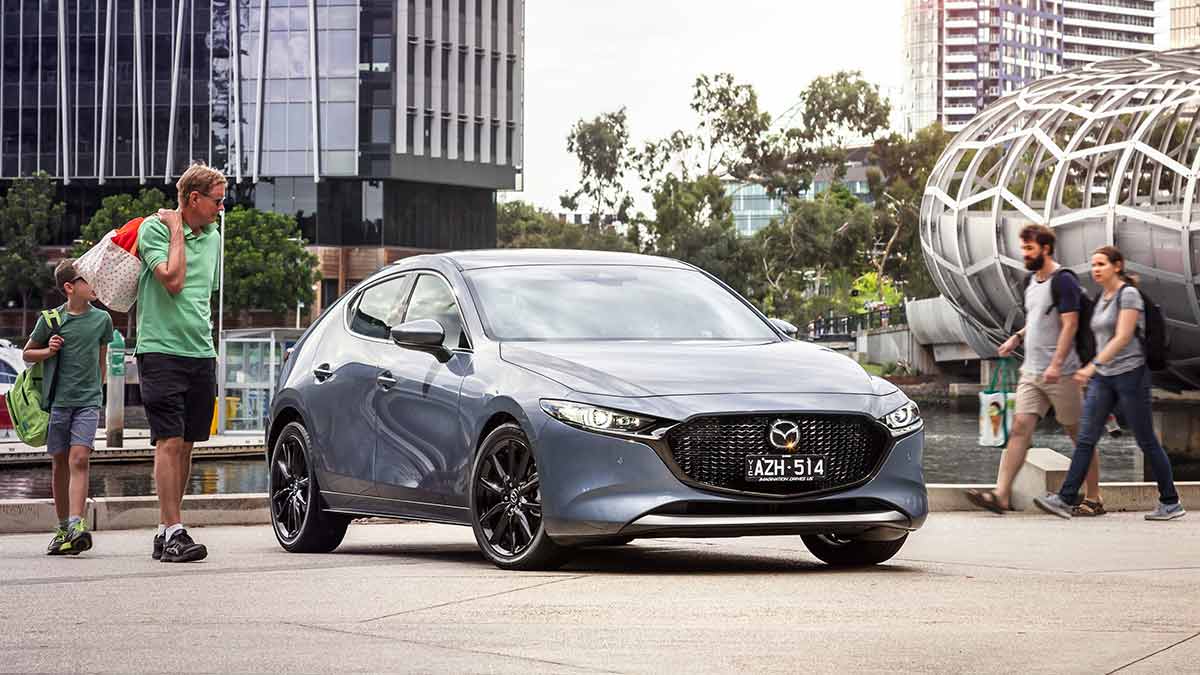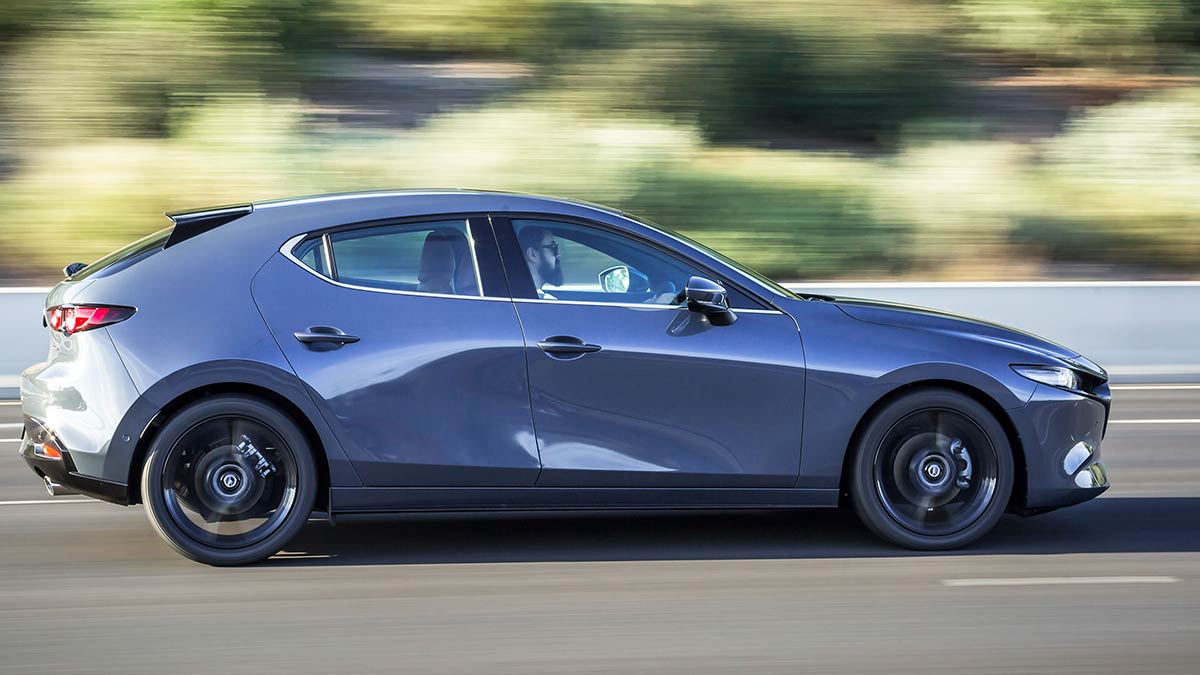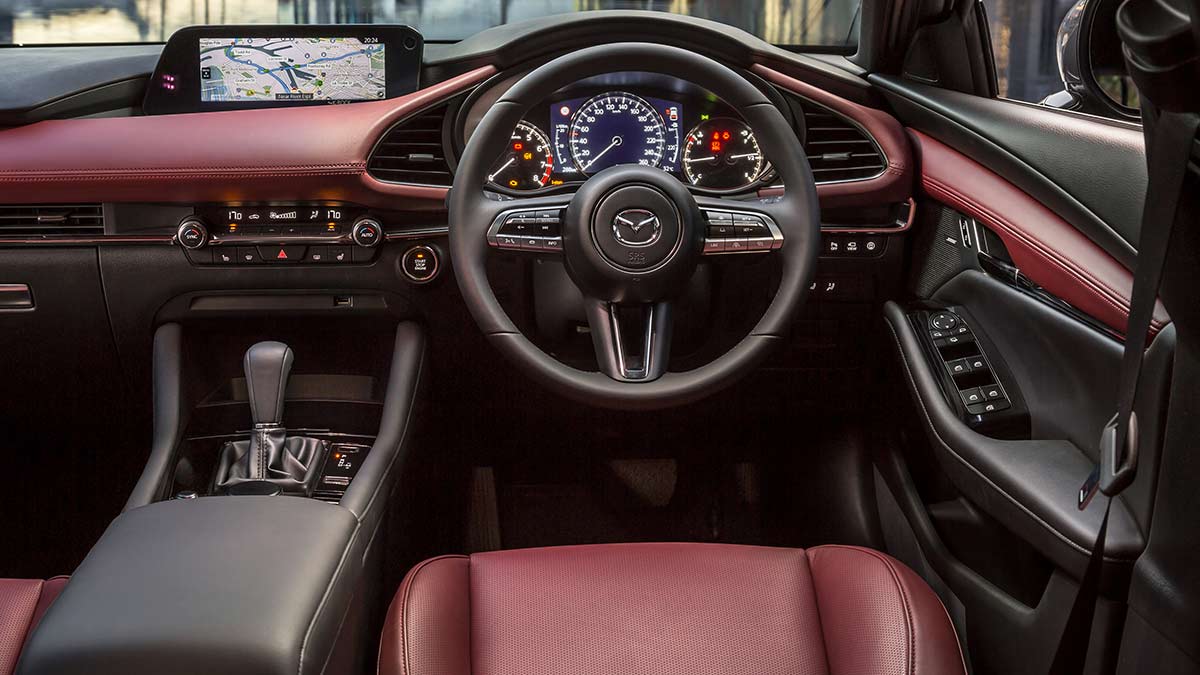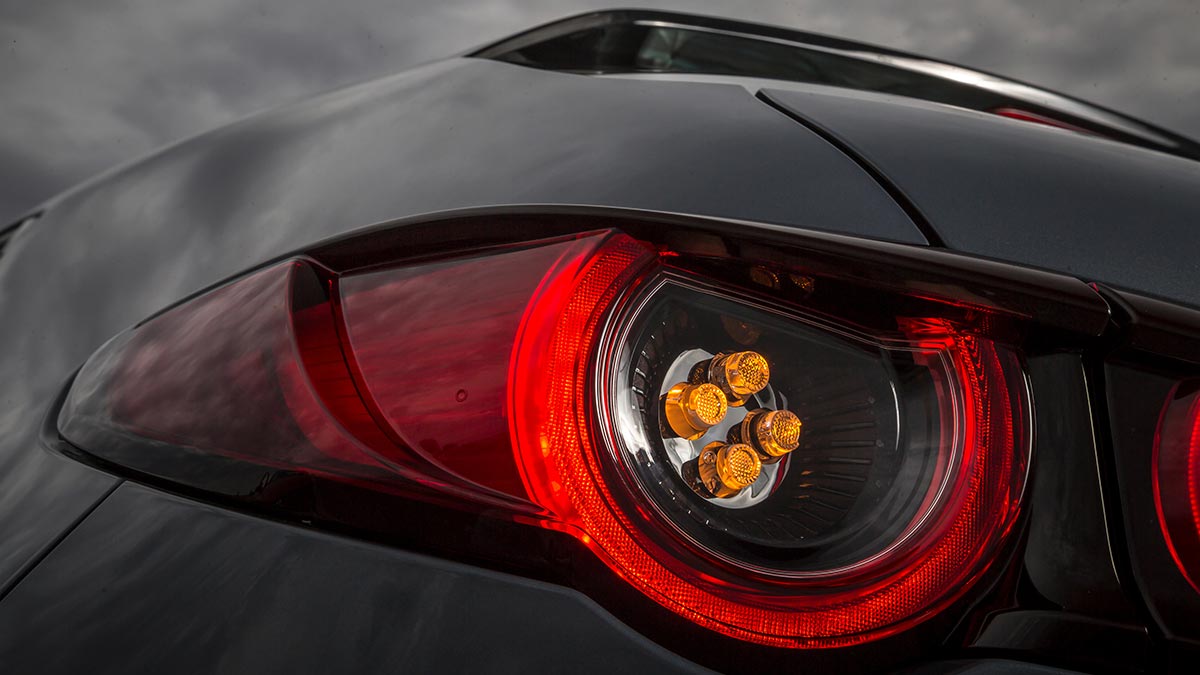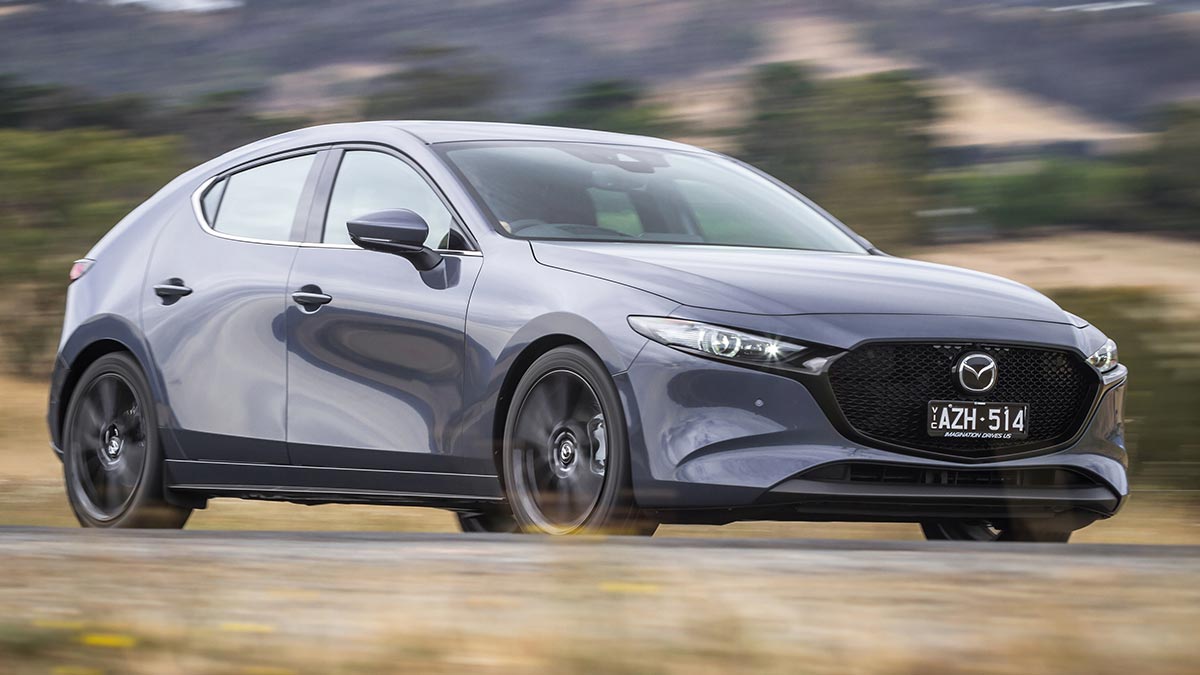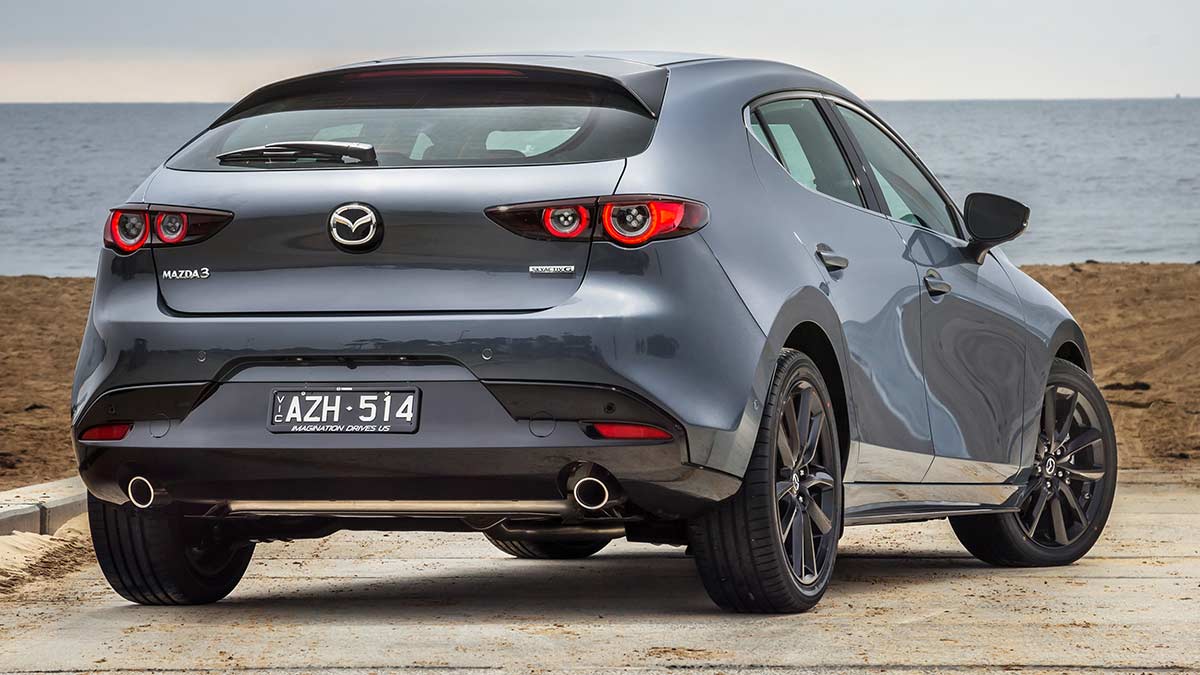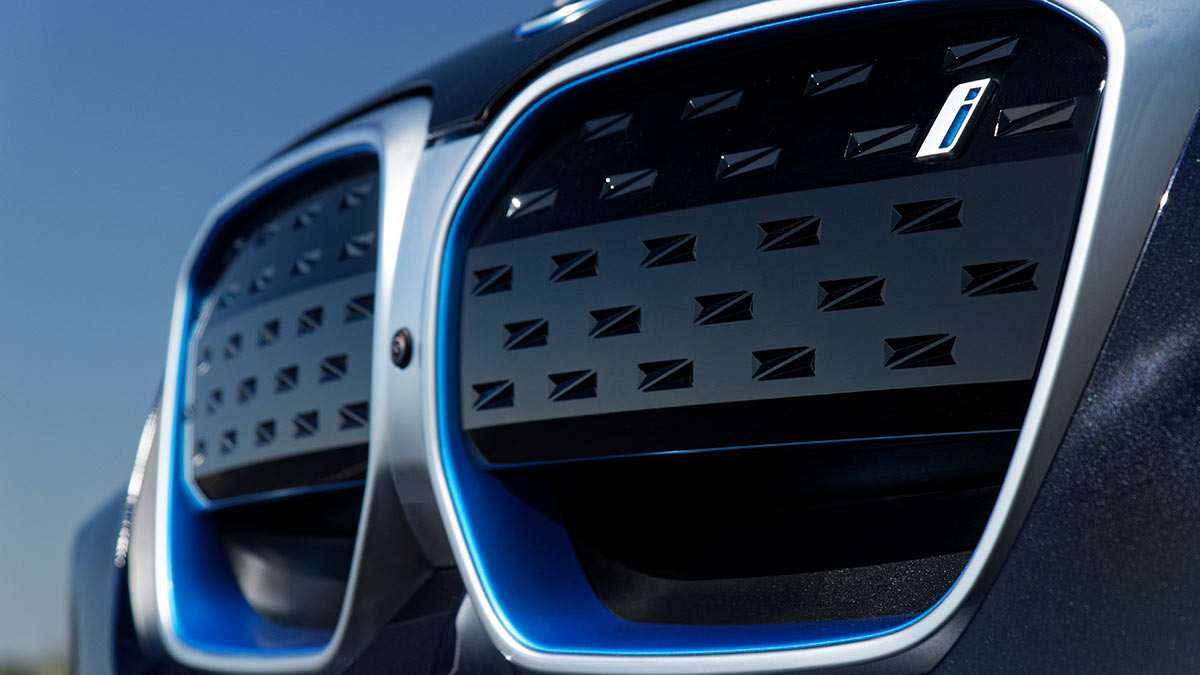The Foton Tunland joins Australia's dual-cab ute market as an affordable mild-hybrid diesel under $50,000, offering strong capability against tough competition.
2022 Mazda3 G20e Evolve hatch road test review

The Mazda3 hatch isn’t the most practical car on the road in terms of carrying capacity, but it certainly is one of the prettiest and best handling.
The Mazda 3 has been a staple for the company since the first-generation vehicle launched here in 2004. Now buyers are glued to high-riding SUVs.
That has seen sales slump for Mazda3 and small cars in general. In Mazda’s case, SUVs such as the CX-3 and CX-30 now represent the volume models.
It’s a global trend, which has enabled Mazda to develop a global approach to the latest iteration of the Mazda3 that focuses on design and driving flair rather than utilitarian conveyancing. This is now much more a lifestyle vehicle than regular family transport, even if it will carry four in relative comfort.
On this page
- How much does the Mazda3 G20e Evolve hatch cost?
- How safe is it?
- What's it like inside?
- What's under the bonnet?
- Is it efficient?
- How does it drive?
- Should I buy one?
How much does the Mazda3 G20e Evolve hatch cost?
At first glance, the Mazda3 G20e Evolve is a staggering $4,800 more expensive than the regular Evolve. That looks like outrageous money for a 24-volt “mild hybrid” system.
Delve deeper and the price difference also includes an automatic transmission (the petrol-engined Evolve comes with a manual transmission as standard), along with a “Vision Technology” pack that bundles a 360-degree camera, front cross-traffic alert, front parking sensors, adaptive cruise control with lane-keep assist and an enhanced driver attention system that combines steering and pedal inputs with camera-based monitoring of the driver’s eyes. That’s a $1,500 option on the regular Evolve.
A list price of $32,640 before on-road costs translates to a driveaway price of $37,078 for buyers in the Melbourne postcode.
The warranty runs for five years and unlimited kilometres. Service intervals are down on its small car rivals at 12 months/10,000km but most suburban cars probably won’t clock up that mileage in a year anyway.
Over the five-year warranty period the cost of keeping the Mazda3 serviced through a dealership is $1,732.
Is the Mazda3 G20e Evolve safe?
Mazda earned a stellar score when the 3 was tested by ANCAP in 2019. The five-star safety rating was based on a 98 per cent adult occupant protection score, 89 per cent for child occupant protection, 81 per cent for vulnerable road user protection and 76 per cent for safety assist features.
Seven airbags are standard and there’s traffic sign recognition, blind-spot monitoring, front and rear cross-traffic alert and auto-braking support when reversing.
The worst criticism ANCAP bestowed upon the Mazda3 range was the absence of an emergency lane keeping assist (ELK). That pushed the overall lane support system score to marginal.
ANCAP considers ELK to be “correction that is applied automatically by the vehicle in response to the detection of the vehicle that is about to drift beyond a solid lane marking, the edge of the road or into oncoming or overtaking traffic in the adjacent lane”.
The safety authority defines lane keep assist as” correction that is applied automatically by the vehicle in response to the detection of the vehicle that is about to drift beyond a delineated edge line of the current travel lane”.
What’s the Mazda3 G20e Evolve like inside?
Mazda has made a concerted effort to push its vehicles into the premium territory in terms of interior design. The Mazda3 reflects that with a quality look that is the Japanese equivalent of Volkswagen or Peugeot.
The infotainment screen is hi-resolution and very easy to operate. Combine that with physical controls for the key elements and you have an intuitive interface that new owners will readily adjust to.
Likewise, the driver’s display shows exactly what you need to know, supplemented by the colour head-up display that projects the key details onto the windscreen. This is a must-have in Victoria where any meandering above the posted speed limit is likely to be me with a notice in the mail.
The seats themselves are supportive, though if Mazda is really playing the premium card, we’d appreciate powered adjustment on the passenger side. That can be had if you spend more on the higher-spec variants.
Space in the rear is limited to two adults and even then, they won’t want to be too tall.
Cargo capacity, however, is the Achille’s heel of the Mazda3 hatch. At just 295 litres, it is around 100 litres smaller than its key rivals.
If that’s an issue, head for the corresponding Mazda 3 sedan. For the same price you’ll see the boot space expand to a far more commodious 444 litres.
What’s under the Mazda3 G20e Evolve’s bonnet?
Mazda’s 2.0-litre four-cylinder engine isn’t turbo-enhanced but still manages to eke out 114kW and 200Nm, sending power to the front wheels via a six-speed automatic transmission.
It does the job, though enthusiasts would be better off considering the 2.5-litre engine with 139kW/252Nm. They may sound like modest gains, but they lift the Mazda3 from reasonable to respectable.
A 24-volt “mild hybrid” electric system (there is no capacity for electric-only driving) complements the petrol engine.
Is the Mazda G20e Evolve efficient?
The G20e Evolve has a 24-volt electrical system that trims fuel use by 0.2 litres every 100km on the claimed combined cycle compared to a comparable petrol-only Mazda3 Evolve using just the 2.0-litre engine.
Energy recovered during braking is stored in a 24-volt lithium-ion battery. That benefit is best achieved in an urban setting, so expect the fuel savings to come closer to 1.0 litre over 100km around town.
The recuperated energy is then discharged to assist the engine by providing a quick-start and an initial shove off the lights.
Mazda says the system can also operate the car’s electrical system, again easing the engine’s workload to improve fuel efficiency.
How does the Mazda G20e Evolve drive?
People buy SUVs for a lot of reasons. Engagement with the car on a twisty road is rarely one of them.
For all their packaging benefits, physics dictate SUVs, with a higher centre of gravity, are not intended to be dynamic drivers.
Modern electronics help offset that with torque vectoring and stability control quelling wayward behaviour before it becomes an issue.
In contrast, low-slung vehicles like the Mazda3 excel through the turns. The Evolve’s sharp steering means the car can be placed on a 10-cent piece and the suspension, while it tends to feel slightly firm around town, then won’t run out of travel on B-roads unless you’ve been foolhardy or seriously misjudged the depth of that pothole.
Real enthusiasts will want the 2.5-litre variants. Many will still complain they can’t get the turbocharged, all-wheel-drive versions of the Mazda3 sold in the USA.
Should I buy one?
Families with growing kids, families with teenagers and people considering having a family who will then need to keep the car for a long time need not apply.
Singles with a passion for driving or an eye for a stylish car are right in the mix, as are downsizing retirees who still haven’t lost their spirited driving nature.
Like the MX-5 sportster, the Mazda3 has become a boutique model in the Mazda range. Not everyone will find it to their taste but those who do will appreciate what it offers.
The information provided is general advice only. Before making any decisions please consider your own circumstances and the Product Disclosure Statement and Target Market Determinations. For copies, visit racv.com.au. As distributor, RACV Insurance Services Pty Ltd AFS Licence No. 230039 receives commission for each policy sold or renewed. Product(s) issued by Insurance Manufacturers of Australia ABN 93 004 208 084 AFS Licence No. 227678.
